 Movies and TV
Movies and TV  Movies and TV
Movies and TV  History
History 10 Momentous Events That Also Occurred on July 4th
 Animals
Animals 10 Times Desperate Animals Asked People for Help… and Got It
 Movies and TV
Movies and TV 10 Movie Flops That Found Their Way to Cult Classic Status
 History
History 10 Things You Never Knew About Presidential First Ladies
 Movies and TV
Movies and TV 10 Zombie Movies That Will Actually Terrify You
 Humans
Humans 10 Times Scientists Were Absolutely Sure… and Absolutely Wrong
 Our World
Our World 10 Pivotal Moments for Life on Earth
 Movies and TV
Movies and TV 10 Most Realistic Medical TV Shows of All Time
 Creepy
Creepy 10 Eerie & Mysterious Ghosts of the Pacific Coast
 Movies and TV
Movies and TV 10 Music Biopics That Actually Got It Right
 History
History 10 Momentous Events That Also Occurred on July 4th
 Animals
Animals 10 Times Desperate Animals Asked People for Help… and Got It
Who's Behind Listverse?

Jamie Frater
Head Editor
Jamie founded Listverse due to an insatiable desire to share fascinating, obscure, and bizarre facts. He has been a guest speaker on numerous national radio and television stations and is a five time published author.
More About Us Movies and TV
Movies and TV 10 Movie Flops That Found Their Way to Cult Classic Status
 History
History 10 Things You Never Knew About Presidential First Ladies
 Movies and TV
Movies and TV 10 Zombie Movies That Will Actually Terrify You
 Humans
Humans 10 Times Scientists Were Absolutely Sure… and Absolutely Wrong
 Our World
Our World 10 Pivotal Moments for Life on Earth
 Movies and TV
Movies and TV 10 Most Realistic Medical TV Shows of All Time
 Creepy
Creepy 10 Eerie & Mysterious Ghosts of the Pacific Coast
10 Pseudohistorians And Their Bizarre Theories
Created by folklorists, scientists, and archaeologists outside of the mainstream, pseudohistory strives to tell the stories of what “really” happened in our Earth’s past. Whether they believe the truth was simply forgotten, interpreted incorrectly, or covered up on purpose, pseudohistorians lurk on the fringes of mainstream academia, peeking into the home of accepted knowledge during the night and occasionally throwing a rock through the window.
10Margaret Murray And The Witch Trials
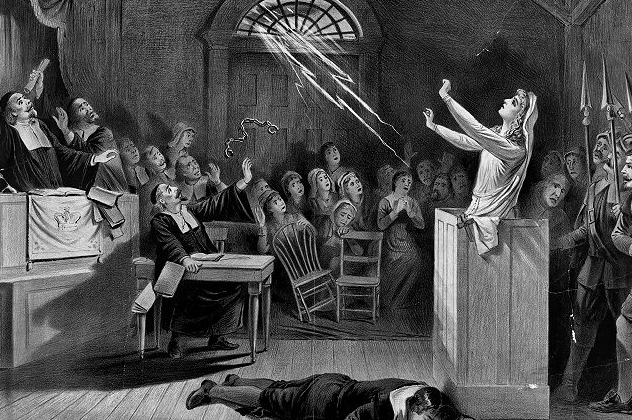
Margaret Murray was a British folklorist who lived from 1863 to 1963. (After her retirement from teaching at age 72, she returned to the field for more archaeological work in Gaza and Petra.) Born in India and educated at University College, London, her primary field of interest was the folklore of Egyptian archaeology and learning more about how material artifacts were tied to belief systems.
In 1921, she published her first book that looked at a phenomenon quite far removed from her usual areas: witchcraft. She was trying to answer the question of how there had been so many witches on trial across Europe and America, all condemned for practicing the same thing and all admitting to the same sorts of spells and rituals—despite the fact that there was no easy system of communication through which groups could share information. She found it odd that the testimonies of many witches were the same, no matter where they were from. They made a deal with the devil, they took part in rituals involving sex and levitation, and they had the same powers when it came to controlling things like love, birth, death, and the crops.
Her theory was that witches were, simply put, the real deal. She believed that the witches put on trial throughout the last few centuries actually represented a resurgence of an ancient cult that worshiped a horned god. Women were equal to men within the society, which she stated practiced child sacrifice and cannibalism in the name of their god (which prominent members would dress up as, supposedly leading to multiple references to intercourse with an animal-demon).
Murray also believed that not only were witches real, but that fairies, dwarves, and elves were also very real, and they were all particularly secretive races of humans that were smaller holdovers from the Neolithic era.
Murray’s theories, while absolutely not accepted by mainstream historians and folklorists, became the catalyst for a whole new movement of witches—her books became something of a blueprint for neo-pagans and Wiccans when they began setting up that same rebirth of witchcraft which Murray claimed had already been flourishing throughout the world.
9James Churchward And Mu
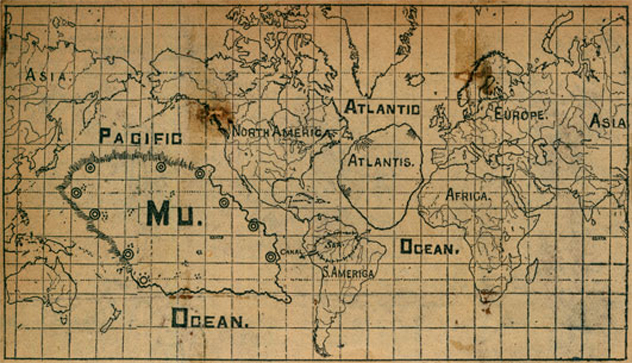
James Churchward was born in England in 1851. He moved to the US in the 1890s, where he held a number of patents for various railway spikes, metal-working and tempering processes, and the process for hardening steel. He was a civil engineer who had served with the British Army, and it was during his service that he came across information relating to the great continent of Mu.
Mu was the Atlantis of the Pacific Ocean. According to Churchward, while he was in India he had become friendly with a priest who allowed him access to some sacred tablets that had been written in a strange language which only a select few could read. The priest taught Churchward how to read the tablets, and he discovered the story of a massive continent that had once floated in the Pacific Ocean. Not only did it float, but it was supported by a series of caves beneath it that could be flooded or filled with air to make the entire continent rise or sink beneath the waves.
Mu, he said, was the true birthplace of the human race and the true cradle of life. Those who still live on the islands of the Pacific were supposed to be descended from the original humans, and the human race spread out from Mu.
Churchward wrote a series of five books detailing Mu and describing it as a paradise on Earth. The books present an amazingly intricate and well-developed civilization—63 million people lived on the continent, which was thriving 200,000 years ago. There was no disease or illness (they’d gotten rid of that by harnessing the colors of the Sun), the people lived incredibly long lives, practiced telepathy and astral projection, and lived in harmony with nature. According to his volume on the religion of Mu, all religions in the world today can trace their development back to Mu.
While pretty much no one has ever taken Churchward’s theories seriously, there has been a randomly interesting discovery relating to his theory. There was a land mass in the Pacific—the continental shelf around Indonesia—that was exposed during the ice ages and has subsequently been lost beneath the waters; it was once used by humans to reach Australia.
8Robert Bauval And The Orion Correlation Theory
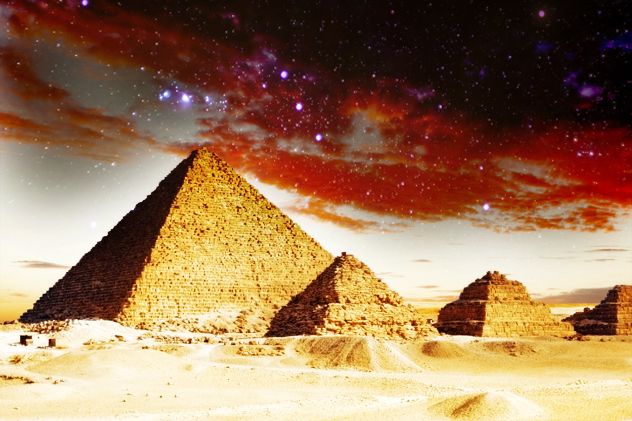
There’s a lot we don’t know about the pyramids of Egypt, but in 1994, British Egyptologist Robert Bauval claimed to have cracked their hidden code.
According to Bauval, the construction of the pyramids was done in a very specific way—they were laid out to mirror the stars of Orion’s Belt. In addition to the physical location of the pyramids being positioned in a way which Bauval says is identical to the way Orion’s Belt would have looked to the Egyptians 4,500 years ago, he also says that he has uncovered shafts within the pyramids themselves that align with the stars of Orion’s Belt when they are at their highest point in the sky. Orion, known to the Egyptians as Osiris, was the lord of the afterlife and a fitting deity to build tombs in honor of. Bauval says that there are other hints that the Egyptians had Osiris in mind when they built the pyramids—another tunnel points to the star associated with Osiris’s wife, Isis, and another star in the constellation was connected to the site of an unfinished pyramid.
Not surprisingly, the rest of the scientific community largely thought of this theory as, shall we say, a load of tosh. In 1999, the Journal of the Royal Astronomical Society ran an article from a professor at the University of Cape Town debunking the whole thing, not least of all because the actual layout of the Giza pyramids doesn’t actually match the layout of Orion’s Belt—at all. Bauval also used the layout and position of the Nile to make his measurements and, as the article also points out, not only does the course of the Nile vary greatly over the centuries, but we don’t even actually know where it really was in the century Bauval points to.
In 2000, Bauval backtracked a bit and stated that of course it wasn’t exact, no representation was ever exact, and the fact that it was close enough was proof in itself.
7Graham Hancock And His Theories On Everything

Graham Hancock can loosely be described as one of the fathers of the so-called ancient astronaut theorists. He first attained popularity with his book Fingerprints of the Gods, where he claimed that he had found a connection between the gods of Egypt and the gods of South America, positing that they weren’t so much gods as they were travelers from another place who had come to Earth to give us the knowledge that jump-started human technology. He cites evidence like the Piri Reis, a map that supposedly shows an ice-free Antarctic coastline, as proof that there was once more advanced technology than we know of and perhaps a civilization way more advanced than we are today.
Hancock has written a handful of books along a similar vein, and the overarching idea is that the Earth was once home to an amazingly advanced civilization that was wiped out by a flood 12,000 years ago. Among his proof is the idea that scattered around the world are similar themes, ideas, and structures coded into ancient ruins. The only way all of these ancient ruins could logically depict the same constellations and patterns is if they were all built by the remnants of the same civilization—his mysterious mother culture.
The above-mentioned Robert Bauval is one of his followers, adding the Orion Correlation Theory to his list of supporting evidence for one single, advanced mother civilization that spread across the world.
Hancock’s theories were most notably explored and pitted against conventional science in the BBC program Horizon: Atlantis Reborn. His theories didn’t entirely stand up, and it led to both Hancock and Bauval filing complaints against the BBC for being unfairly represented. The Broadcasting Standards Commission didn’t agree with them.
6Christopher Knight, Alan Butler, And The Time-Traveling Moon Builders

Christopher Knight is the author of several books. Who Built the Moon?, co-authored with Alan Butler, attempts to change everything you know about the Moon.
According to Knight, there’s just something too perfect about the Moon. It’s 400 times smaller than the Sun, 400 times closer to the Earth than the Sun, appears to be exactly the same size as the Sun, and acts as a completely perfect mirror to the Sun. He further substantiates his claims by taking a theory from an Oxford University professor, which states that the ancient system of mathematics was based on a 366-degree circle rather than a 360-degree circle. He then applied the numbers to the relationship between the Sun, the Earth, and the Moon. The numbers fall into place using this other sort of geometry, and Knight says it all adds up to only one logical conclusion. The Moon is too perfect to have been a mere coincidence, he says, stating that its size, distance from the Earth, gravitational pull, and apparent age all match each other too well.
Knight says that there are only three options for how the Moon could have come into existence: aliens, humans, or God. And according to Knight, since only one of those is scientifically and logically possible, there’s pretty much no mystery left to how the Moon got there—it was artificially constructed by time-traveling humans who came from the future to build the Moon and make sure we developed as a species on Earth.
5Paul Rassinier, Harry Elmer Barnes, And The Holocaust Denial

The Holocaust Denial movement is built around a few key beliefs. Not only does it deny that the Nazi regime was responsible for the massive extermination of the Jews during World War II and the existence of gas chambers, but it also suggests that all of the negativity associated with the German actions during the war was the result of exaggerations. It also insists that any deaths that happened in concentration camps were the fault of those being held there, not the Germans running them.
The movement was started in large part by Paul Rassinier, brief prisoner of Buchenwald and brief member of the French National Assembly. Upon reading the reports of concentration camps and death camps that were released after the end of the war, he denied ever seeing any gas chambers at Buchenwald (there actually weren’t any) and extended that to a denial of any gas chambers anywhere. Rassinier went on to write a series of books in which he provided “proof” that there was actually no such thing as the Holocaust, saying that it was all propaganda created by the Allies to justify their sweep through Europe and their actions during the war. He even goes back a bit further, suggesting that the whole thing really started during World War I and it’s all just an attempt to make Germany look even worse after their earlier defeat.
Harry Elmer Barnes was an American contemporary of Rassinier’s, and after the war he took an extremely pro-German and pro-Nazi stance in his writings. He blamed the beginning of the war on France and Russia, stating that the atrocities committed in concentration camps were simply an exaggeration of events. He also states that he knows this is true because, if the Germans had wanted to wipe out the Jews, they would have.
Today, the mantle of Holocaust denial has been picked up by Austin App, who turned the beliefs and claims of Rassinier and Barnes into eight fundamental “truths” about World War II. They include the idea that there were never any gas chambers and that crematoriums were simply used to deal with the bodies of people who had died due to natural causes. They also say that the goal had been to allow the Jews to emigrate, that those who did die in German custody were rightfully executed as spies and enemies of the state, and that there is no scientific evidence whatsoever supporting the claims that there ever was a Holocaust.
4Oscar Kiss Maerth And Cannibalism

Maerth has largely faded into obscurity at this point, but he’s left behind a rather strange legacy. His 1971 book The Beginning Was The End ended up providing the inspiration for the band Devo, specifically with the line from its cover: “Man came into being through cannibalism—intelligence can be eaten!”
According to Maerth’s book, humans are the way we are today because we used to be cannibals. Early humans began to eat the brains of other people and primates around them, literally eating their intelligence and speeding up their evolution. Brain-eating gave humans things like increased intelligence, bigger brains, and bigger, hairless bodies, but we also paid the price for the rather non-conventional food source. It was cannibalism that led to our loss of moral standards, the ability to read minds, and the ability to communicate with animals.
The bigger brains that occurred happened faster than the increase in the size of our skulls, so the pressure of the brain on the skull meant that our ancestors were somewhat crazy. Maerth also goes on to explain that this is where Bigfoot comes from—Bigfoot is descended from a group of our ancestors who decided to stop eating brains earlier than we did. The development of Bigfoot into present-day humans was halted, and this also helps to explain why different races have different head and brains sizes—it’s all dependent on when we stopped eating each others’ brains.
3Eugene McCarthy And The Chimpanzee-Pig Hybrid Theory

A long time ago, Darwin suggested that humans developed from the same branch of the tree as chimpanzees. Now, Dr. Eugene McCarthy is taking that just a little bit farther and suggesting that the chimpanzee is only one of our “parents.” His work with genetics and breaking down the various traits associated with humans and monkeys has led him to believe he has found the other parent of the human race, the parent that gave us all the traits the chimpanzee didn’t: pigs.
According to McCarthy, a lot of the traits of the human being can be traced back to our primate ancestors, and other traits—like non-furry skin, a protruding nose, and terrestrial tendencies, among others—can all be traced back to the pig. The theory is complex, and he cites the compatibility of pig heart valves with human hearts as part of his supporting evidence. He also goes on to explain potential difficulties with the theory, stating that not all hybrid animals are sterile as popularly thought, and that there’s actually nothing in the history of species that suggests that mating between “incompatible” species never happens and isn’t viable.
There are a couple ways that he suggests this all might have come about, including the idea that the hybridization of chimpanzees and pigs happened millions of years ago to produce the very first of the early hominids. He also suggests that the cross-mating could have happened in different areas of the world independently, forming the different bases for each one of the races we now see in humans.
2Ignatius Donnelly And Atlantis
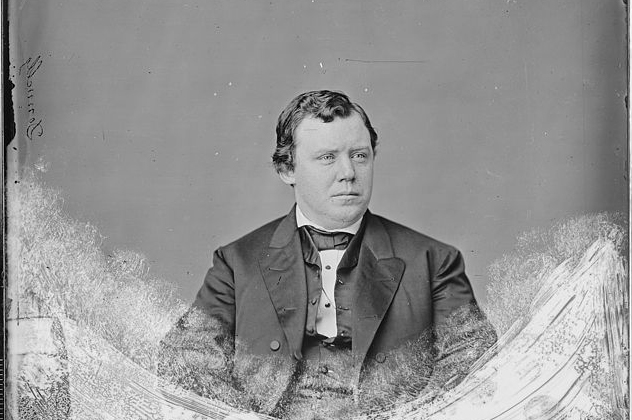
Mainstream history has pretty much accepted the fact that Atlantis was a myth, made up by Plato to illustrate a point rather than historical truth. But Atlantis is absolutely real, at least according to Ignatius Donnelly, a Civil War–era governor and member of the House of Representatives for Minnesota.
According to his 1882 book Atlantis, the Antediluvian World, the long-lost island civilization was very much real. The entire book sets about to prove that the island was in the Atlantic Ocean along the same rough latitude as the Mediterranean Sea, and it was the location of the first civilized society on Earth.
When Atlantis sank into the ocean, there were groups of people that escaped and fled to other areas of the world, taking with them stories of their homelands. These stories became the mythologies and religions of the world—all references to the Garden of Eden, the Elysian Fields, and Asgard were really echoes of Atlantis. The various gods and goddesses worshiped around the world were based on the survivors of Atlantis, and the first place settled by refugees from Atlantis (and therefore the closest to their civilization) was Egypt.
Donnelly points to the likelihood of such a catastrophe happening and uses the destruction of Pompeii as a historically accepted example of why it’s possible. He goes on to say that the idea of a real Atlantis explains a lot about the similarities in world mythologies and the seemingly ever-present stories of a Great Flood. He also says that the advancement of technology and civilization happened at the same time refugees from Atlantis were fleeing with their knowledge and technologies and bringing them to other parts of the world.
He even points to similarities in worship that grew in lands previously thought to have been unconnected—the idea of virgin priestesses, hereditary priesthood, the giving of confession and the serving of penance, and the worship of certain animals and the fear of others, particularly creatures like werewolves. One of the only ways this all makes sense, Donnelly says, is if Atlantis was real and all other cultures were based on the same civilization.
1Zecharia Sitchin And The Ancient Astronaut Theories
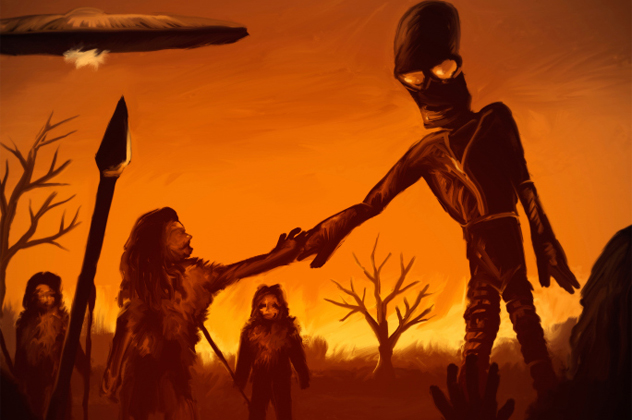
Like many pseudohistorians, Zecharia Sitchin’s credentials are there—he was educated at the University of London, got his degree in economic history, and spent time in Israel before moving to New York, where he died in 2010.
Sitchin is one of the men largely responsible for the creation of the ancient astronaut theory (although he’s by far not the only one). The basics of his theory involve a planet he calls Nibiru, which comes close to Earth every 3,600 years. About 450,000 years ago, the aliens from Nibiru first came to Earth looking to mine our gold reserves. They found a race of beings on the planet already that could help them mine their gold, but those beings needed a little nudge in the right direction. The aliens became gods to early man, and the texts that we still have from ancient civilizations like Sumeria tell the story of the aliens—if you know how to read it right.
With the help of the aliens and their technology, mankind built the first great cities. About 30,000 years ago, though, those cities were destroyed in a massive flood. The aliens finally left around 550 B.C., and we’ve been on our own ever since. Fact became mythology and religion, and it’s only now that we’re beginning to translate ancient texts with one eye on the stars that we’re finally catching on to the real history of the world and the human race.
Not surprisingly, mainstream historians and archaeologist have greeted this theory with first stuttering disbelief then some pretty potent debunking and no small amount of name-calling. The theories hinge in large part upon the theorists having some sort of secret knowledge that allows them to interpret tablets and ancient writings as only they can.








